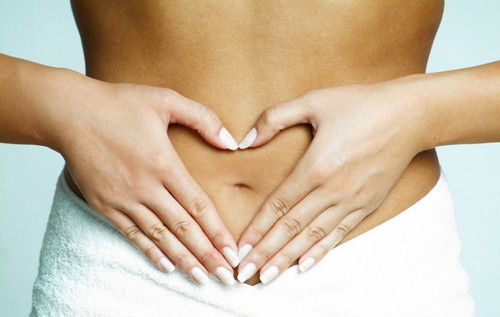During childbirth, a woman receives many microtraumas that heal on their own within a few weeks. They do not cause discomfort to young mother and do not require specific treatment.
Serious ruptures of the perineum and cervix often occur, which leads to suturing, which, if improperly maintained, can cause complications.
Sutures after childbirth are imposed in the event that gaps occurred during the advancement of the child along the birth canal. Despite the elasticity of the cervix and the walls of the vagina, it is quite difficult to avoid injuries.
Why are stitches needed?
Most often, tears occur with a large fetus, rapid childbirth, when the tissues are not stretched enough, with the wrong behavior of the woman in labor. The last point concerns women who begin to push ahead of time or strain the pelvis, creating an obstacle to the passage of the child.
Sutures are also applied in case of cutting the perineum (episiotomy). The reasons are similar – the fetus is incorrectly positioned, its large size, poor muscle elasticity. Dissection of the perineum is also necessary for prolonged childbirth, when the water has departed, and the child is difficult to pass through the birth canal. In these cases, an episiotomy saves the fetus and woman from getting lacerations that heal much longer than a surgical incision.

Types of seams
There are two types of postpartum sutures:
- Internal – are superimposed on the walls of the vagina and cervix with mechanical injuries. The internal sutures after childbirth heal quickly enough and consist of self-absorbable material. When applying, anesthesia is not required, since the neck does not have sensitivity.
- External – superimposed during dissection or rupture of the perineum. Depending on the wound, both self-absorbable material and the usual one used in surgery and required removal on the fifth day can be used.
How many sutures heal?
If a woman complies with all the instructions prescribed by the doctor, then the postpartum sutures heal within 3-5 weeks. With large gaps and non-compliance with basic hygiene rules, the healing process may take several months.
Self-absorbable material disappears completely from the wound about the second week after delivery. Conventional surgical sutures are removed 5 days after delivery.
Woman’s feelings
Unfortunately, suturing almost always leaves an unpleasant imprint. It is impossible to avoid pain and discomfort, but if you follow a few important rules, which will be described later, you can reduce the healing time of the sutures.
The first few days in the inguinal region may cause a burning sensation, itching, or fullness. If there is no bleeding, then there is no cause for concern. The main thing is not to expose your body to heavy load, and with severe pain it is imperative to see a doctor.
Discomfort during intercourse is possible. Before complete healing of the sutures, it is necessary to abandon sex! A woman will not only be hurt, but a complication is also possible.

How to care for wounds?
If internal sutures after childbirth do not require special care, then external wounds must be monitored with particular care. The first treatment is carried out in the hospital, then repeated 2-3 times a day. Usually they use green or potassium permanganate for this.
After discharge from the stitches, a woman needs to independently process the stitches and follow a few simple rules:
- Change the gasket every 2-3 hours, at least. Postpartum discharge worries every woman in labor, so the use of hygiene products is mandatory. If possible, it is better to use special gaskets that have a natural base and soft, non-synthetic material as a coating. They prevent the appearance of allergies, irritation and contribute to the rapid healing of sutures.
- Wash yourself with warm running water, after a shower walk a bit without laundry. In the air, sutures after childbirth heal much faster. You can not wipe the perineum with a towel after a shower. It is better to get a little wet with a cotton cloth or wait until it dries completely.
- After the shower, process the seams with green.
- You can not lift weights for a month and sit for at least 10 days.
- You need to wear linen only from natural materials, even better – disposable cotton panties. At first, it is necessary to abandon narrow linen that violates the blood flow in the genitals.
Possible complications
In most cases, the sutures heal well after childbirth, without giving the woman unnecessary discomfort.
But there are several diseases that can lead to non-compliance with hygiene rules and weakened immunity of a young mother:
- The seam has spread. With improper suturing, bowel movement with effort and weight lifting, seams may diverge. More often this happens during the first three days after giving birth, but maybe later. Treatment consists in re-suturing.
- A seam is festering. If a woman has an infection that has not been cured before childbirth or does not follow hygiene, suppuration of the suture is possible. In this case, severe pain occurs, the wound swells, pus is released from it. Only a doctor can prescribe treatment, you should not try to get rid of inflammation yourself!
- The seams hurt a lot. As mentioned above, at first, the external seams cause pain. Within normal limits, when a woman feels discomfort when sitting or washing. If the pain does not stop, but intensifies, there is a burning sensation or pressure when walking, then we can talk about the inflammatory process. You can’t start the disease, you need to see a gynecologist and get treatment recommendations.
No need to be afraid of suturing during childbirth. This is a manipulation customary in modern medicine that allows you to save the health and life of a child, and a woman to prevent the appearance of ugly, unaesthetic wounds.



